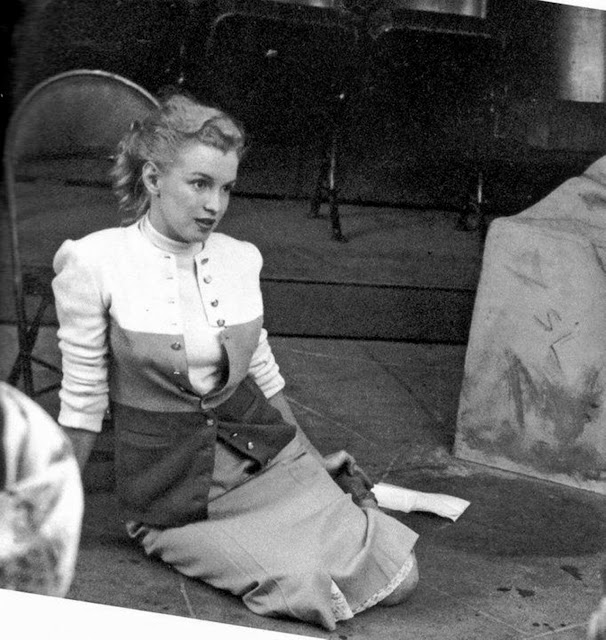The Salvation of Mauthausen Survivors – When Humanity Rises from the Ashes
In May 1945 , as Europe finally breathed a sigh of relief after six years of war, a suspended moment was forever etched in the memory of humanity. American troops entered the Mauthausen concentration camp in Austria, one of the last bastions of the Nazi concentration camp machine. What they discovered was beyond anything imaginable: skeletal figures, lifeless eyes, bodies broken by hunger, cold, and torture.
And yet, in the midst of this desolation, there was a gesture of incredible power. The survivors, exhausted, most of them unable to stand, raised their trembling arms to the liberators. It was a fragile, almost unreal salute, but one that contained all the strength of human hope and resilience .
Mauthausen was not just a forced labor camp; it was intended as a place of annihilation through exhaustion. Thousands of men and women were deported there, condemned to extract stone in quarries, to carry blocks of granite so heavy that many died on the steps nicknamed “the stairway of death.”
Hunger was a weapon. Daily violence was an instrument of domination. Prisoners lost their identity: stripped of their names, replaced by numbers, dressed in striped uniforms that had become universal symbols of dehumanization.
And yet, behind those emaciated faces, there remained a glimmer of hope: the certainty that one day, the oppression would end.
On May 5, 1945, American tanks entered the camp gates. The soldiers, hardened by the bloody battles of World War II , stood frozen in front of the spectacle. They had never seen such a concentration of human suffering.
One soldier noted in his diary:
“They greeted us not as men, but as symbols, proof that the nightmare was coming to an end.”
The survivors, too weak to scream, too broken to run for freedom, simply raised their arms, thin as dry branches. In this gesture, there was a mixture of gratitude, recognition, but also mourning. It was the last breath of a humanity that had been sought to be crushed and which, nevertheless, was reborn in this simple greeting.
This salute, immortalized by some photographers and etched in the memory of those who saw it, goes beyond military symbolism. It was not a sign of submission or discipline: it was the expression of a collective memory in the process of being written.
In this fragile gesture, the story of thousands of beings reduced to shadows was condensed. It was a thank you to the liberators, certainly, but also a tribute to those who had not survived. Each of these raised arms seemed to carry with it the voice of the disappeared, as if to say: “We have suffered, but we are still here.”
Today, when we think of the liberation of the camps , this moment at Mauthausen comes back as a symbol. It represents the passage from darkness to light, from oppression to recognition, from suffering to survival.
Historians talk about numbers: 190,000 people deported to Mauthausen, of whom nearly 90,000 died. But behind the statistics, there is this salvation, this tiny gesture that says more than all the words. It speaks of human resilience , this ability to survive even when all seems lost.
The Mauthausen salvation was not just a gesture of the past. It became a spiritual legacy . For what it embodies goes far beyond the historical context: it reminds us that, even in the darkest darkness, man retains within himself a spark that nothing can completely extinguish.
This heritage is precious in a world where threats persist, where hatred sometimes resurfaces in other forms. This is why it is essential to transmit this memory, through memorial trips , museums, testimonies, but also through education and literature.
The universal values of dignity, freedom and solidarity find here a timeless source of inspiration.
Survivors who were able to testify after the war emphasized this moment of liberation. For them, raising their hands was not a simple reflex. It was an oath: to tell, to let the world know what had happened behind those barbed wire fences.
Today, we are the heirs of that oath. We have a responsibility not to forget. The words ” Holocaust ,” ” concentration camps ,” or ” World War II ” must not remain abstract notions in school textbooks. They must continue to resonate as warnings, calls for vigilance.
Today, every visit to Mauthausen is a journey of remembrance . The cold stones, the restored barracks, and the death stairs are there to remind visitors of the extreme cruelty but also the strength of those who survived.
Standing on this ground, one can almost feel the weight of this fragile salvation, like an invisible presence that continues to inhabit the place. It is a moving experience that transforms those who visit, pushing them to reflect on the fragility of freedom and the importance of preserving it.
The survivors’ salute was not just a gesture to American soldiers; it was a message for future generations. A message of resilience , a lesson in courage and humanity.
In a modern world searching for meaning, where crises and divisions sometimes seem insurmountable, this story reminds us that even after absolute horror, it is possible to get back up, to welcome life, to reach out to others.
The story of Mauthausen is a story of suffering, of death, but also of rebirth. This fragile and trembling salvation marked the tipping point where horror gave way to hope.
It was a moment when history and humanity came together, when a simple gesture carried within it the full burden of collective memory and spiritual heritage .
Today, it continues to resonate like a silent prayer: never forget, never let inhumanity triumph.







